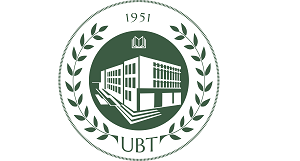|
1 Department of Food Microbiology, Food Safety and Veterinary Institute (FSVI), “AleksandërMoisiu” No. 10, Tirana, Albania 2 Department of Veterinary Public Health, Faculty of Veterinary Medicine (FVM), Kodër-Kamëz, Tirana, Albania Abstract As Albanian shellfish farming is increasingly becoming an essential component of food industry, ensuring the microbial safety of the products for the consumers has been a significant concern. Vibrio species are naturally present in brackish waters. A subpopulation of V. parahaemolyticus can cause infection in humans with serious complications. The objective of this study was to evaluate the occurrence of V. parahaemolyticus in molluscan shellfish production zone such as Butrinti lagoon, cape of Rodon and bay of Shëngjin. PCR is a gold standard for the detection/confirmation of pathogenic Vibrio spp. in presumptive positive isolates and toxR gene is considered a standard marker to genotype environmental or clinical strains. DNA of Vibrio spp. were extracted by using the composition and protocol for Alkaline PEG. Sixty samples of live bivalve mollsuscs (M. galloprovincialis) were collected in the year 2020 (February-September) in three production area. Results showed that 6.7% of environmental V. parahaemolytcicus were positive (4/60). The highest percentage of occurence was found at Butrint lagoon (3/36) (8.3%), followed by cape of Rodon (1/14)(7.1%) positivity. No presence of V. parahaemolyticuswas found at Shëngjin bay (0/10). Concern about foodborne illnesses from V. parahaemolyticus, especially when bivalve mollsucs remains as a vehicle of transmission of Vibrio, are likely to continue in future. Keywords: M. galloprovincialis; real-time PCR; gold standard; Vibrio parahaemoliticus |
